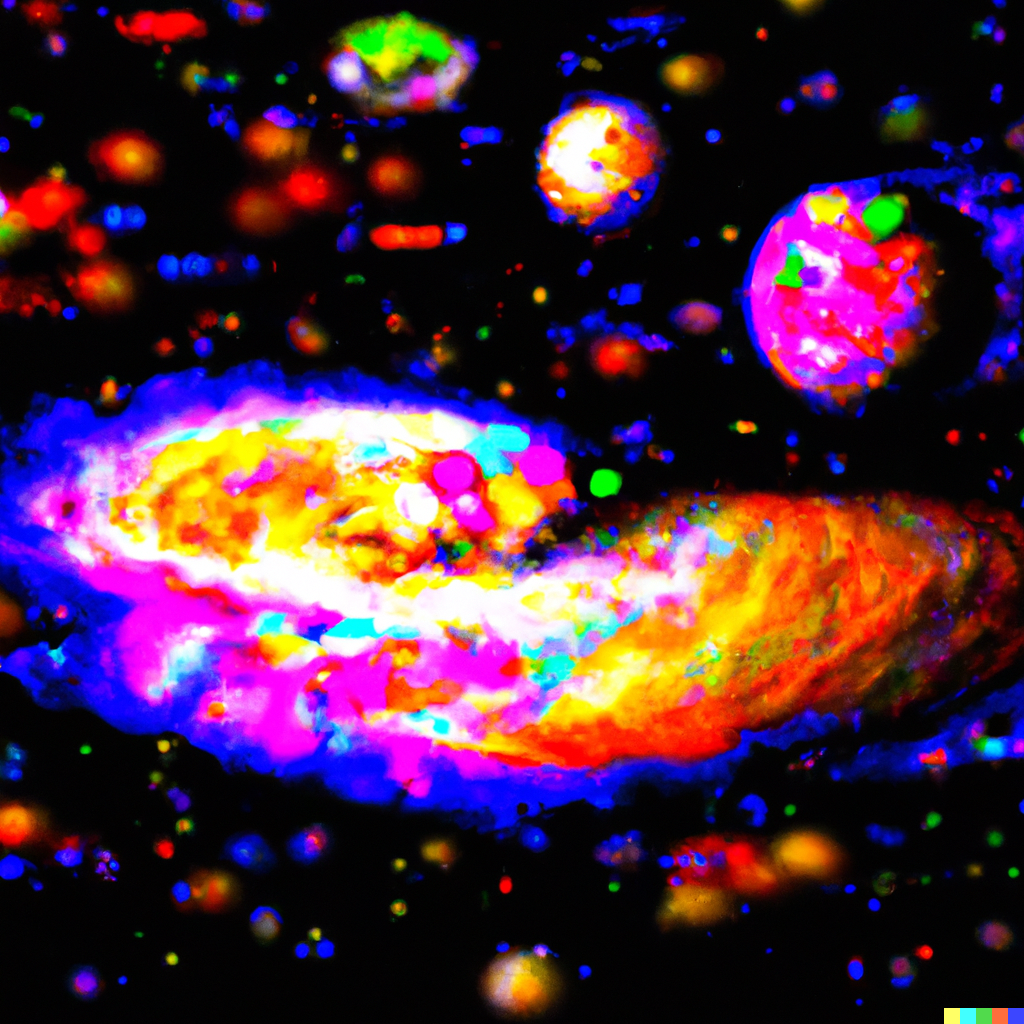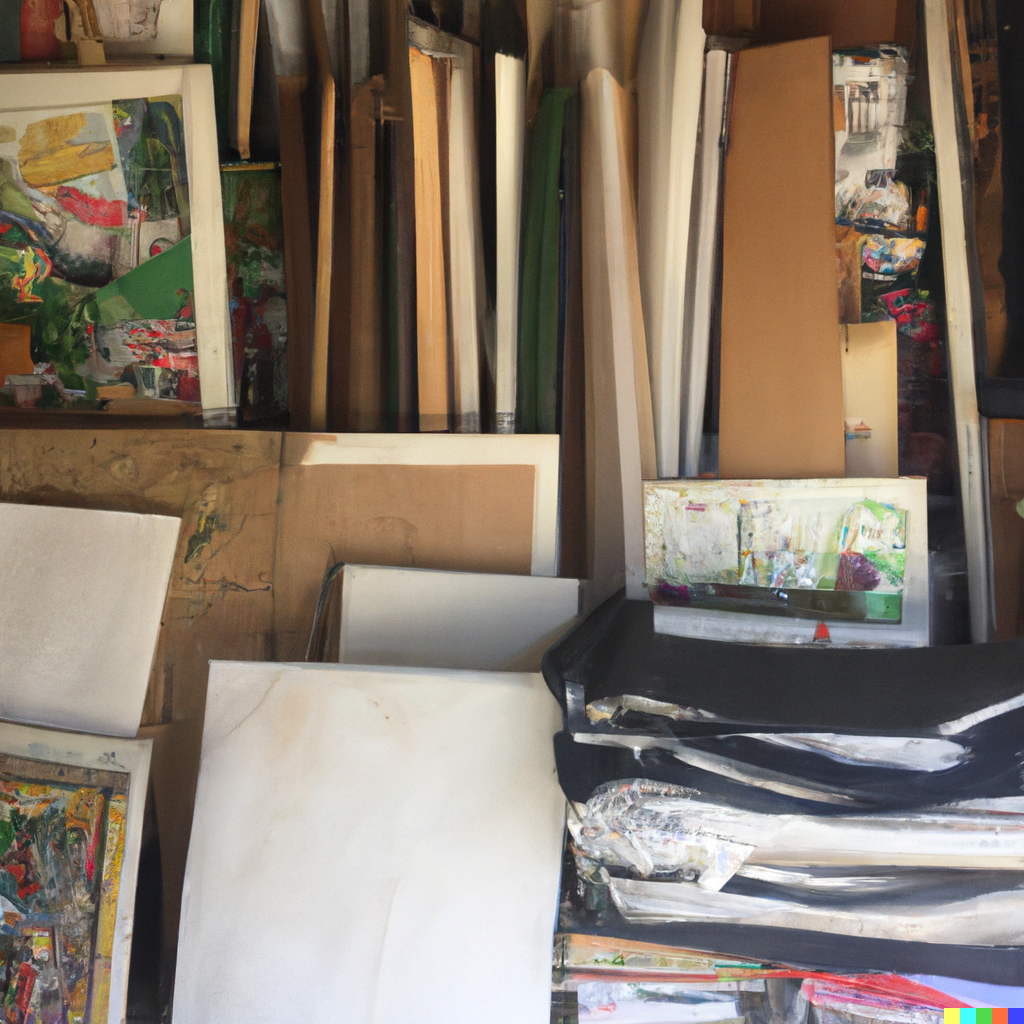Intro to AI Art
AI art can refer to several different things. Some programs will remix images the user feeds the program with other artwork—the currently trending Lensa app does this to create fantasy avatars—or automatically make complex edits to an image with a simple slider—lens correction, bigger eyes, smaller nose, etc. This site is mostly concerned with the kind of AI that uses a text prompt to generate images from scratch, the model followed by popular programs such as DALL-E, Midjourney or Stable Diffusion.

"AI art generator making the universe"
In the past, AI art generators would take a set of images and feed them to an algorithm to produce a new image in the style of the dataset it was fed. The newest generation of AI art generators marry this technology with algorithms that analyze natural language. Images with accompanying text are scraped from across the internet, the algorithm links text with images and uses pattern recognition to build image concepts associated with particular words—a sense of “blue-ness” associated with “blue”, or “square-ness” associated with “square”. When you enter a text prompt, the algorithm is connecting your prompt with these concepts to build a new image. The algorithm is not actually taking little bits of other pictures and pasting them together like a collage, it is building a new image with the qualities of the image concepts it has linked to certain text.

"Enormous amounts of artwork"
The datasets required to train an AI to build these image concepts are enormous—in the range of billions of images. Curating datasets of this size is difficult and time consuming and many companies have chosen to scrape images indiscriminately off the internet to build their datasets. However, concerns about how these indiscriminate datasets may be perpetuating bias has led some companies to start curating their images to ensure more equitable representation and counteract certain associations, like connecting certain racial groups with crime, or beauty with a western european ideal. In the near future, algorithms may be able to function with smaller datasets, which would allow for greater curation of images, though this may also make it easier to omit large categories of images, resulting in different kinds of bias. Many artists are also concerned by this indiscriminate scraping as they feel that they have not consented to the use of their images in these ways. Evidence of this kind of scraping can be found in visual artifacts in the AI generated images—fake signatures or watermarks.